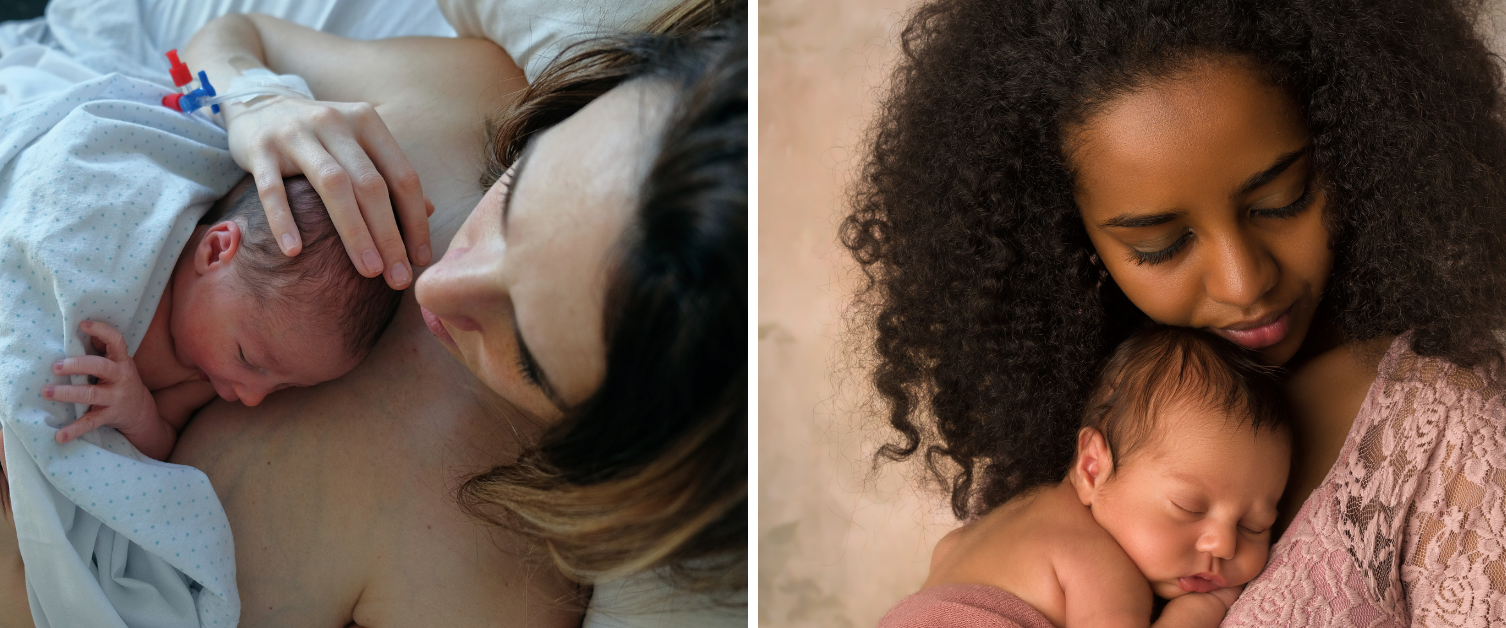Skin to Skin

Skin to skin contact with your baby after the birth helps your baby move safely from the womb to the world and starts your new relationship.
All mothers are encouraged to hold their baby on their chest in skin to skin contact after the birth regardless of how they intend to feed their baby. Your midwife will dry your baby, placing them undressed against your skin and cover you both with a towel or blanket. We encourage you to hold your baby in this special cuddle for at least an hour or until the baby has had a first breastfeed.
Vest tops and low necked T-shirts are useful clothes to wear in hospital to make skin to skin contact easier. A baby in skin to skin contact will often move instinctively towards the breast guided by their sense of smell. Heavily scented perfumes or soaps should be avoided.
Why is skin contact so important?
- Skin contact with mother is essential to help a baby make the safe transition from the “womb to the world”
- It calms and reassures your baby to help them to feel safe and secure
- It calms mother after the stresses of labour and birth
- It helps to regulate your baby's heart rate, breathing rate and temperature - helping your baby to keep warm
- It encourages important mother and baby instinctive bonding behaviours
- Skin contact and an early feed means breastfeeding is more likely to be successful in the longer term
Keep your baby in skin contact as much as possible in the first few days. Skin to skin contact is a wonderful way of bonding with your baby straight away after giving birth and in the weeks and months that follow. We encourage dads and partners to have some skin contact with baby as well.
What if you can't have skin to skin with your baby straight away
Sometimes issues can arise during and after the birth which means you may not be able to have skin to skin contact with your baby straight away.
Make sure your birth partner is aware that they may need to step in and hold your baby in skin to skin contact if you need medical treatment. Your birth partner should prepare for the birth by wearing a top that opens easily so your baby can be placed on their chest and covered warmly.
As soon as your medical condition allows, your baby should be transferred straight back to you for a prolonged period of skin to skin contact to initiate this important step in your new relationship.
Holding your baby safely
Your midwife should have a discussion with you and your birth partner shortly after the birth about how to hold your baby safely. Always call a member of staff immediately if you have any concerns about your baby's colour or condition.
Hold your baby close enough so you can:
- Kiss your baby’s head
- See your baby’s chin
- Easily see your baby’s colour
- Keep your baby’s neck straight and head upright so they breathe easily
It is important that you hold your baby safely in skin to skin contact. Find out more information about holding your baby safely on the Unicef website.
Your baby needs to know you are close all the time. They will be used to hearing your voice and hearing your heart beat and so skin contact helps your baby to feel safe.
Getting to know your new baby and responding to their needs
Your baby’s brain will develop rapidly during their first couple of years. There are many things you can do to help your baby’s brain to develop well:
- Cuddling your baby
- Kissing your baby
- Responding to your baby when they cry
- Talking to your baby
- Making eye contact with your baby
- Keep your baby close to you day and night
- Bonding for dads and partners - having a period (e.g. at least an hour) of skin to skin contact with baby every day is the best way for a dad/ partner to bond with their new baby